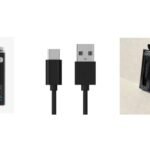Precious metals trading through contracts for difference (CFDs) offers a modern way for traders to speculate on gold, silver, platinum, and palladium without the challenges of physical ownership. These markets often experience significant price swings driven by economic uncertainty, geopolitical events, and changes in monetary policy.
The Appeal of CFDs in Precious Metals Trading
One of the main advantages of CFDs is their ability to provide exposure to the precious metals market without requiring traders to store or transport physical assets. Instead of purchasing bullion or coins, traders can open positions based on price movements, making it a convenient alternative for those looking to capitalize on short-term fluctuations.
Leverage is another key feature that attracts traders to CFDs. By using leverage, traders can control larger positions with a smaller initial investment, potentially increasing their returns. For example, a relatively small price shift in gold or silver can result in significant gains when leverage is applied effectively. However, leverage is a double-edged sword—just as it can amplify profits, it can also magnify losses, especially in highly volatile conditions where price reversals are common.
Managing Risk in a Volatile Market
Given the unpredictability of precious metals prices, implementing risk management strategies is essential for long-term success. Stop-loss orders are a critical tool, allowing traders to set predefined exit points that automatically close positions when prices reach a certain level. This helps prevent excessive losses, particularly when markets move against expectations.
Diversification is another method to mitigate risk. Instead of focusing on a single metal, traders can spread their exposure across multiple precious metals. While gold often reacts strongly to economic events, other metals like platinum and palladium may exhibit different price patterns, creating opportunities to balance potential losses in one area with gains in another.
Experienced traders often capitalize on volatility by closely monitoring market trends and global developments. Economic reports, central bank decisions, and political tensions can all trigger price swings in precious metals. CFDs allow traders to react quickly, taking long positions when prices are expected to rise and short positions when declines are anticipated. This flexibility enables traders to benefit from market fluctuations in both directions, a distinct advantage over physical metal investments that only gain value when prices increase.
The Cost Considerations of CFD Trading
While CFDs offer flexibility and accessibility, they also come with costs that traders must consider. Unlike physical metals, which can be held indefinitely, CFDs are subject to transaction costs, including spreads and overnight financing fees. These costs can accumulate over time, particularly for traders who hold positions for extended periods.
Is Precious Metals CFD Trading Worth the Risk?
For traders who understand market trends and apply disciplined risk management, CFDs offer an efficient way to engage in precious metals trading. The ability to trade with leverage, take both long and short positions, and avoid storage concerns makes CFDs an attractive option for those looking to profit from short-term price movements.
However, beginners should approach this market with caution. Before committing significant capital, new traders can build experience by practicing on demo accounts or starting with smaller, less leveraged positions. Understanding how external factors influence metal prices and having a clear exit strategy can help traders minimize risks and improve their chances of success.
Striking the Right Balance
CFDs on precious metals provide an exciting opportunity for traders willing to embrace market volatility. With proper risk management, technical analysis, and a strategic approach, these instruments can be a valuable addition to a diversified trading portfolio. While the risks are undeniable, those who navigate them wisely can unlock the potential rewards that come with trading one of the world’s most sought-after asset classes.




